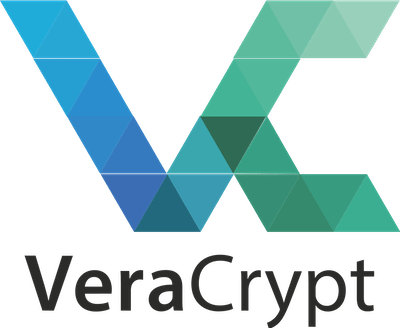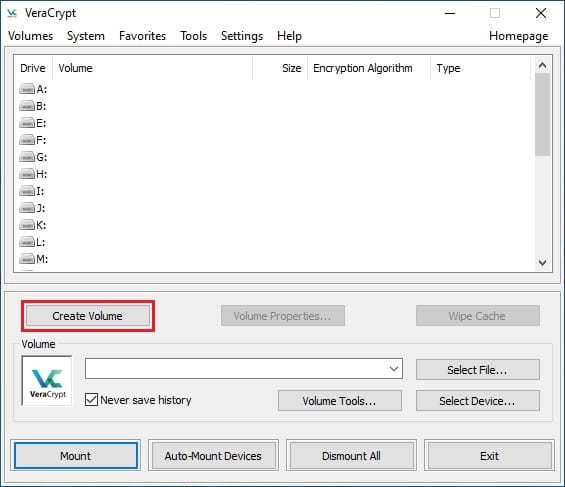How To Install VeraCrypt on Fedora 42

VeraCrypt stands as the premier open-source disk encryption software, providing robust security for sensitive data through advanced cryptographic algorithms. This comprehensive tutorial demonstrates three reliable methods to install VeraCrypt on Fedora 42, ensuring your files remain protected with military-grade encryption.
Understanding VeraCrypt: The Modern Encryption Solution
What is VeraCrypt?
VeraCrypt represents the evolution of disk encryption technology, building upon the foundation laid by TrueCrypt while addressing critical security vulnerabilities. This free, cross-platform encryption tool creates virtual encrypted disks within files or encrypts entire partitions, providing seamless on-the-fly encryption and decryption.
The software supports multiple operating systems including Windows, macOS, and Linux distributions like Fedora 42. Its robust architecture ensures data remains secure even if physical storage devices fall into unauthorized hands.
Advanced Security Features
VeraCrypt implements multiple encryption algorithms including AES-256, Serpent, Twofish, Camellia, and Kuznyechik. The software supports cascaded encryption, combining multiple algorithms for enhanced security against sophisticated attacks.
Hash functions available include BLAKE2s-256, SHA-256, SHA-512, Streebog, and Whirlpool, providing comprehensive cryptographic protection. The RAM encryption mechanism prevents cold boot attacks by clearing sensitive data from memory during system shutdown.
System Prerequisites and Requirements
Hardware and Software Requirements
Before installing VeraCrypt on Fedora 42, ensure your system meets minimum specifications. The software runs efficiently on x86_64 architecture with at least 2GB RAM and 100MB available disk space.
Administrative privileges are essential for installation and operation. VeraCrypt requires sudo access to mount encrypted volumes and interact with system-level storage APIs.
Pre-Installation Preparation
Update your Fedora 42 system to ensure compatibility with the latest security patches:
sudo dnf update --refreshVerify your system architecture to download the correct VeraCrypt package:
uname -mCreate a backup of important data before proceeding with encryption setup. While VeraCrypt installation itself poses minimal risk, preparing encrypted volumes requires careful attention to avoid data loss.
Installation Method 1: Official RPM Package
Downloading the Official Package
Navigate to the official VeraCrypt download page to obtain the latest release. Select the Linux distribution package compatible with CentOS/RHEL, which works seamlessly with Fedora systems.
Download using command-line tools for verification:
wget https://github.com/veracrypt/VeraCrypt/releases/download/VeraCrypt_1.26.24/veracrypt-1.26.24-Fedora-40-x86_64.rpmImport the VeraCrypt GPG public key to verify package authenticity:
gpg --import VeraCrypt_PGP_public_key.ascInstalling via DNF Package Manager
Install the downloaded RPM package using DNF:
sudo dnf install veracrypt-1.26.24-Fedora-40-x86_64.rpmThe installation process automatically resolves dependencies and configures system integration. If dependency conflicts arise, DNF provides detailed resolution options.
Verification and Initial Launch
Confirm successful installation by checking the version:
veracrypt --versionLaunch the graphical interface to verify functionality:
sudo veracryptThe VeraCrypt main window should appear, indicating successful installation and system integration.
Installation Method 2: COPR Repository
Understanding Community Repositories
The Fedora COPR (Cool Other Package Repo) system provides community-maintained packages not available in official repositories. The robot/veracrypt COPR offers regularly updated VeraCrypt packages for Fedora users.
COPR repositories undergo community review but lack the same validation as official Fedora packages. Exercise caution when enabling third-party repositories and verify their trustworthiness.
Enabling the COPR Repository
Enable the VeraCrypt COPR repository:
sudo dnf copr enable robot/veracryptThis command adds the repository configuration to your system, allowing access to community-maintained VeraCrypt packages.
Installation via COPR
Install VeraCrypt from the enabled repository:
sudo dnf install veracryptThe COPR installation method provides automatic updates through the standard DNF update process. This approach ensures you receive the latest VeraCrypt versions as they become available.
Installation Method 3: Building from Source
Preparing the Development Environment
Source compilation provides maximum control over the installation process and ensures compatibility with your specific system configuration. Install required development tools:
sudo dnf groupinstall "Development Tools"
sudo dnf install wxGTK3-devel fuse-devel pkg-configAdditional dependencies include:
sudo dnf install make gcc-c++ nasm yasmDownloading and Compiling Source Code
Download the official source code from the VeraCrypt website:
wget https://github.com/veracrypt/VeraCrypt/archive/refs/tags/VeraCrypt_1.26.24.tar.gz
tar -xzf VeraCrypt_1.26.24.tar.gz
cd VeraCrypt-VeraCrypt_1.26.24/srcCompile the source code:
make NOGUI=1For the graphical version:
makeInstallation and System Integration
Install the compiled binaries:
sudo make installThe installation places VeraCrypt binaries in appropriate system directories and configures desktop integration for GUI versions.
Alternative Installation: Flatpak Method
Flatpak Universal Package Installation
Flatpak provides containerized application deployment, offering enhanced security through sandboxing. Install VeraCrypt via Flatpak:
flatpak install flathub org.veracrypt.VeraCryptRunning Flatpak VeraCrypt
Launch the Flatpak version:
flatpak run org.veracrypt.VeraCryptFlatpak installations run in isolated environments, providing additional security layers but may have limited system integration compared to native installations.
Post-Installation Configuration
Initial Setup and Interface Familiarization
Launch VeraCrypt from the applications menu or command line. The main interface displays available mount slots and encryption options.

Configure default settings through the Preferences menu:
- Set default mount directories
- Configure hotkey combinations
- Adjust security timeouts
Basic Configuration Options
Access preferences to customize VeraCrypt behavior:
- Enable auto-dismount on system shutdown
- Configure keyfile search directories
- Set default encryption algorithms
These settings enhance usability while maintaining security standards appropriate for your threat model.
Creating Your First Encrypted Volume
File Container Creation Process
Create an encrypted file container through the VeraCrypt Volume Creation Wizard:
- Select “Create an encrypted file container”
- Choose “Standard VeraCrypt volume”
- Specify container location and filename
- Select encryption algorithm (AES recommended for beginners)
- Set container size based on storage needs
- Create a strong password or keyfile
- Format the new volume with desired filesystem
Partition Encryption Setup
For encrypting entire partitions:
- Select “Encrypt a non-system partition/drive”
- Choose the target partition
- Select encryption and hash algorithms
- Create recovery information
- Begin the encryption process
Partition encryption irreversibly modifies disk structures. Ensure complete backups exist before proceeding.
Troubleshooting Common Issues
Installation and Permission Problems
DNF installation failures often stem from repository configuration issues or dependency conflicts. Resolve by:
sudo dnf clean all
sudo dnf makecachePermission errors during volume mounting require proper sudo configuration. Add your user to relevant groups:
sudo usermod -a -G fuse,disk USERNAMERuntime and Mounting Issues
“Cannot obtain administrator privileges” errors indicate authentication problems. Verify PolicyKit configuration and ensure your user account has administrative rights.
Kernel crypto module conflicts may prevent mounting. Resolve by adding the nokernelcrypto parameter:
veracrypt --mount /path/to/volume /mnt/veracrypt --pim=0 --keyfiles="" --protect-hidden=no --nokernelcryptoGUI and Desktop Integration Problems
Desktop environment integration issues may prevent proper application launching. Reinstall desktop files:
sudo desktop-file-install /usr/share/applications/veracrypt.desktopUpdate desktop database:
sudo update-desktop-databaseSecurity Best Practices and Recommendations
Password and Authentication Security
Create strong passwords using diverse character sets including uppercase, lowercase, numbers, and symbols. Consider using password managers to generate and store complex passphrases.
Keyfile authentication provides additional security layers. Store keyfiles on separate devices to prevent single-point-of-failure scenarios.
Operational Security Considerations
Always properly dismount encrypted volumes before system shutdown or device removal. Improper dismounting may cause data corruption or security vulnerabilities.
Enable RAM encryption to prevent sensitive data exposure through memory dumps. This feature clears encryption keys from system memory during normal operation.
Avoid storing VeraCrypt containers on cloud storage services without additional encryption layers. Cloud synchronization may expose metadata or partial container contents.
Performance Optimization and Algorithm Selection
Hardware Acceleration and Performance
Modern processors provide AES instruction set extensions (AES-NI) that significantly improve encryption performance. VeraCrypt automatically utilizes these features when available.
Monitor system performance during encryption operations. Large volume creation may consume significant CPU and I/O resources, potentially impacting system responsiveness.
Algorithm Selection Guidelines
AES encryption provides excellent performance-to-security ratios for most use cases. Advanced users may prefer cascaded encryption algorithms for enhanced security against theoretical attacks.
Serpent offers stronger theoretical security margins but requires more computational resources. Twofish provides balanced performance characteristics suitable for older hardware.
Comparison with Alternative Encryption Solutions
VeraCrypt vs. LUKS/cryptsetup
Linux Unified Key Setup (LUKS) provides native disk encryption integrated with the Linux kernel. LUKS offers superior performance for full-disk encryption scenarios but lacks cross-platform compatibility.
VeraCrypt excels in portable encryption scenarios where cross-platform access is required. Container files can be accessed from Windows, macOS, and Linux systems seamlessly.
VeraCrypt vs. Cryptomator
Cryptomator focuses on cloud storage encryption with transparent file-level protection. This approach suits users primarily encrypting cloud-synchronized data.
VeraCrypt provides comprehensive disk-level encryption suitable for complete system protection. Choose VeraCrypt for comprehensive security; select Cryptomator for cloud-specific encryption needs.
Maintenance, Updates, and System Management
Keeping VeraCrypt Updated
RPM installations require manual updates by downloading newer packages from the official website. Monitor the VeraCrypt release announcements for security updates and feature improvements.
COPR repository installations receive automatic updates through the standard DNF update process:
sudo dnf updateSource installations require manual recompilation when updates become available. Subscribe to the VeraCrypt mailing list for release notifications.
System Upgrade Considerations
Fedora version upgrades may affect VeraCrypt functionality, particularly for source installations. Test VeraCrypt operation after major system updates and be prepared to reinstall if necessary.
COPR repositories may lag behind Fedora releases. Monitor repository status during distribution upgrades and consider alternative installation methods if packages become unavailable.
Backup Strategies for Encrypted Data
Implement comprehensive backup strategies for encrypted volumes. Store backup copies on separate physical devices and verify restoration procedures regularly.
Consider creating volume header backups using VeraCrypt’s built-in tools. Header corruption can render entire volumes inaccessible, making backup restoration critical for data recovery.
Advanced Configuration and Integration
System Service Integration
Configure VeraCrypt for automatic mounting during system startup by creating systemd service files. This approach suits server environments requiring encrypted storage access without interactive authentication.
Desktop environment integration enables seamless volume mounting through file managers. Configure appropriate PolicyKit rules to enable user-level mounting without sudo requirements.
Network and Remote Access
VeraCrypt containers can be stored on network filesystems including NFS and SMB shares. Ensure network connections provide adequate security for encrypted container transport.
Consider container synchronization strategies for multi-device access. Tools like rsync can maintain encrypted volume consistency across multiple systems while preserving security.
Future Considerations and Development Trends
Emerging Encryption Standards
Monitor developments in post-quantum cryptography as quantum computing advances may affect current encryption algorithms. VeraCrypt development continues incorporating new cryptographic standards as they mature.
Hardware security module (HSM) integration may provide enhanced key management capabilities in future releases. Consider long-term security requirements when implementing VeraCrypt solutions.
Congratulations! You have successfully installed VeraCrypt. Thanks for using this tutorial for installing VeraCrypt free and open-source disk encryption software on Fedora 42 Linux system. For additional help or useful information, we recommend you check the official VeraCrypt website.